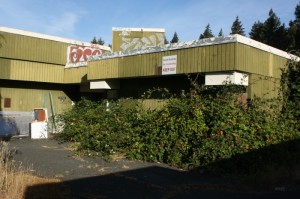With the September 20 announcement of a $29.2-million grant from the provincial government, Camosun College is all set to go with its latest plan: the building of new trades and technology buildings. The new buildings will be located near the Interurban main campus, across the street where the Tillicum Lodge is currently situated, which puts the new buildings within easy walking distance.
“There will be two facilities where the Tillicum Lodge currently is,” says Eric Sehn, Camosun’s dean of trades and technologies. “One will be a marine and metals trade centre, and the other building will be a mechanical trades centre.”
Some of the provincial grant money will also be going towards the refurbishment of the Jack White and the John Drysdale buildings at the Interurban campus.

“They’ll be getting some upgrades and some refurbishing so we can get them into a contemporary state,” says Sehn. “A lot of the programs that are in the John Drysdale building will migrate to the Jack White building. And what will remain in the Jack White is a expanded centre for innovation and applied research.”
Sehn also reports that the $29.2 million will not cover the complete cost of the planned buildings and renovations, and that the college will be looking to fundraise for an additional $800,000, bringing the total to $30 million.
“We’re going to be doing some fundraising, particularly around acquisition of the equipment,” he says. “Some of the upgrades that we want to do will have to come from sources other than the Advanced Education grant. People think that $29.2 million is a lot of money, which it is, but with projects like this it doesn’t take very long for all the resources to be allocated.”
While current students will not get to experience the new buildings, as they are currently not set to be complete for three and a half years, some of them are already seeing the upsides.
“It’s awesome because trades have been kind of underutilized for as long as I can remember,” says Danika Serafin, a sheet metal and fabrication student. “So now that they’re being known, and more money is being put into it, you’ll have more people interested. It also is helping draw in younger people.”
Sean Kelley, another student in the sheet metal and fabrication program, also recognizes the communal benefits of the project, mentioning how they’ll be especially beneficial after the announcement of the National Shipbuilding Procurement Strategy by the federal government.
“It is really going to help out at the dockyard with all the new ship building contracts, and will help to get that underway and put some workers in there,” says Kelley.
Meanwhile, Sehn wants students to know that this project will be an advantage across the board, not just for the trades and those involved in them.
“The main message here is that it is about more than just the trades,” he says. “It’s about trades, it’s about technology, it’s about better serving the resource industry, aerospace, and, of course, the expanded applied research. It’s a great thing for the trades and technology programs; it’s excellent for the school, and it’s a great benefit to the college and to the community.”
